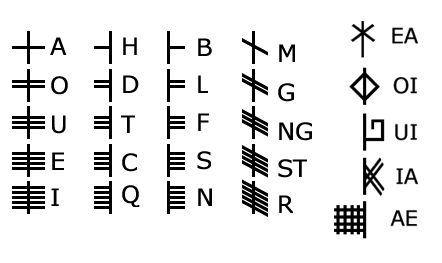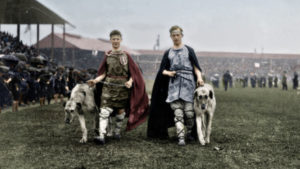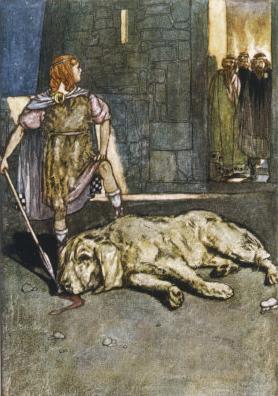Ogham (pronounced “ohm”, or with a soft g “oh-gham”) is an ancient Irish method of writing.
It was a special language known only to the initiated and higher classes. A champion warrior had to know how to read and write ogham, as did any learned scholar.
There were originally twenty letters grouped into four groups of five. Each group was known as an aicme. An additional aicme, known as the forfeda, was added a later date for use in manuscript writing.
The names of each letter related to an Irish tree or plant. So, for example, the letter B is called beith which is the Irish for birch, the letter L is called luis which is the Irish for a rowan tree, the letter F is called fearn which is the Irish word for an alder tree and so on.


Remants of ogham are most commonly found on stone inscriptions and currently there are approximately 400 known Ogham stones situated across Ireland.
University College Cork hosts a collection on display for public viewing.

Ogham in Irish Mythology

Irish mythology credits the introduction of ogham to the mythical and mysterious group of god-like Tuatha De Danann, specifically to the champion known as Ogma.
Ogma was known as “the Honey-Tongued” and he is the god of speech and eloquence. Since he is credited with the creation of the Beth-Luis-Nion, Ogham is named such in honour of Ogma.

We also find reference to Ogham in the Ulster Cycle of Irish Mythology, which recounts the exploits of the famous boy-hero, Setanta, or to give him his heroic name, Cuchullain.
In the great Gaelic epic called the Táin Bó Cúailnge, or the Cattle Raid of Cooley, we follow Cuchullain as he single-handedly defends his home province of Ulster against the men-of-Ireland, led by Queen Maeve who jealously sought to steal the great bull of cooley.
In one episode, called Cuchullain puts the host under a geis, we learn how Cuchullain puts a uses Ogham to put a geis, an imposed pledge or obligation, similar to a vow, and which worked much like a magic spell in binding a warrior to his duty.
The story tells how Cuchullain went to the forest and stood on one leg. Using only one hand and one eye, he cut an oak sapling, twisted it into a circle, and began to cut Ogham characters into it which put the warriors of Queen Maeve under a geis not pass that place until one of them could repeat his actions and make an Ogham branch under similar conditions.
When the armies reached the point the Ogham branch was found on a pillar and deciphered, but no one among them was able to replicate the feat of Cuchulain.
And so, bound by the geis, they were unable to advance.



